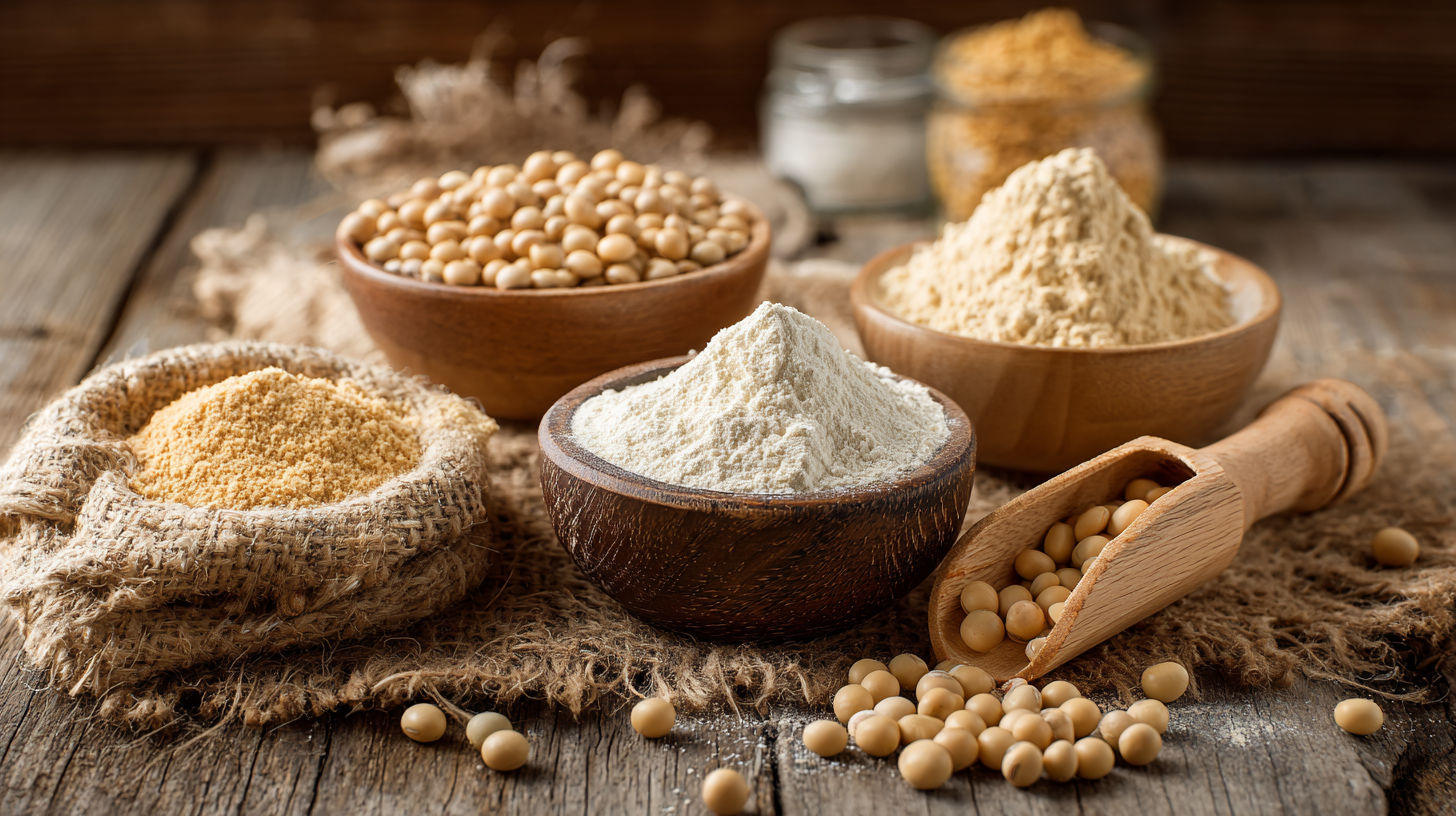The soy protein industry is experiencing significant evolution, driven by an increasing demand for sustainable and plant-based protein sources. According to a recent report by Grand View Research, the global soy protein market is projected to reach USD 16.5 billion by 2025, with a compound annual growth rate (CAGR) of 7.7% from 2019 to 2025. This growth is fueled by an expanding consumer awareness around health benefits and the environmental impact of dietary choices, prompting food manufacturers to innovate and diversify their soy protein offerings.

As we look towards 2025, it is essential to explore emerging trends and effective solutions within the soy protein sector, addressing challenges such as flavor enhancement, texture improvement, and nutritional optimization. Through this exploration, stakeholders can navigate the dynamic landscape of soy protein and meet the evolving needs of consumers while embracing sustainable practices.
The soy protein industry is witnessing transformative advancements driven by emerging technologies in production and processing. According to a recent report by Research and Markets, the global soy protein market is projected to reach $18.1 billion by 2025, growing at a CAGR of 6.1%. Innovations such as precision fermentation and enzyme technology are enhancing protein extraction processes, leading to higher yields and better resource efficiency. These technologies not only reduce the environmental footprint but also improve the nutritional profile of soy protein products, making them more appealing to health-conscious consumers.

Additionally, the integration of AI and machine learning in soy protein processing is revolutionizing quality control and product development. Data from Grand View Research highlights that AI-driven analytics can lead to a 30% reduction in production costs by optimizing crop yields and minimizing waste. The introduction of smart sensors in production lines is further accelerating this trend, allowing for real-time monitoring and adjustments that enhance product consistency and sustainability. As these innovations unfold, the soy protein industry is poised to meet the demands of a growing market while advancing towards more environmentally friendly practices.
As the soy protein industry evolves, sustainability has emerged as a critical driver shaping its landscape. Increased consumer demand for plant-based protein sources is steering manufacturers towards more eco-friendly practices. Innovations in cultivation techniques, such as regenerative agriculture and precision farming, are becoming prominent. These practices not only enhance crop yield but also improve soil health and reduce carbon footprints, aligning with the broader goals of sustainability.
Moreover, brands are now focusing on the entire lifecycle of soy protein production, from farm to fork. Implementing transparency in sourcing, reducing waste, and enhancing processing efficiency are key components to creating a more sustainable value chain. Collaborations between farmers, researchers, and industry stakeholders are fostering developments in alternative protein sources, such as lab-grown variants and hybrid products, which are less resource-intensive. This shift towards sustainability not only benefits the environment but also meets the rising expectations of consumers who are increasingly concerned about the ecological impact of their dietary choices.
Innovative applications of soy protein are reshaping the landscape of the food and beverage industry as we approach 2025. The market for soy protein is projected to reach $16.8 billion by this year, driven by increased consumer demand for plant-based alternatives. In particular, soy protein isolates are gaining traction due to their superior amino acid profile and functional properties, making them suitable for a diverse range of applications—from protein bars and snacks to meat alternatives and dairy substitutions. According to a recent report by ResearchAndMarkets, the global soy protein market is expected to register a CAGR of over 7.5% during the forecast period, indicating robust growth.
Innovators are exploring unique formulations that enhance taste and texture while maintaining the health benefits associated with soy protein. For instance, brands are integrating soy protein in functional foods, targeting emerging consumer preferences for health-conscious and convenient meal options. Recent advancements in extraction and processing technologies are enabling the development of soy protein products that offer improved solubility and flavor profiles. Additionally, the rise of flexitarian diets is pushing manufacturers to experiment with hybrid products that combine soy protein with other plant-based ingredients, thereby appealing to a broader audience. With ongoing research and innovation, the soy protein industry is positioned to offer exciting new trends that cater to the evolving tastes and dietary requirements of consumers.
As the soy protein industry evolves, understanding consumer preferences and market demand for 2025 becomes crucial. Recent market analysis reports indicate a significant shift in consumer attitudes towards plant-based proteins. According to a report by Grand View Research, the global soy protein market is projected to reach $13.21 billion by 2025, driven by an increasing number of health-conscious consumers opting for plant-based diets. This shift is largely influenced by the growing awareness of the health benefits associated with soy proteins, such as lower cholesterol levels and improved heart health.
Additionally, a survey conducted by the International Food Information Council revealed that nearly 40% of consumers prioritize high-protein content in their food choices, with soy protein being a preferred option due to its complete amino acid profile. The demand for soy protein is further bolstered by its versatility in various food products, from meat alternatives to protein bars, enhancing its appeal across different demographics. As consumers increasingly seek nutritious, sustainable, and ethically sourced food options, the soy protein industry is poised for remarkable growth in the coming years. Key players will need to innovate and adapt to these trends to meet evolving consumer expectations effectively.
The soy protein industry is currently navigating a complex landscape marked by regulatory challenges that can significantly impact its growth and development. According to a report from the United Nations Food and Agriculture Organization, the global demand for plant-based proteins, including soy, is projected to reach 116 million metric tons by 2025. However, the industry faces stringent regulations regarding food safety, labeling, and genetically modified organisms (GMOs). These regulations can vary greatly from one region to another, creating a challenging compliance environment for producers and suppliers.

To address these regulatory hurdles, the soy protein industry must adopt effective solutions that ensure both compliance and innovation. One promising approach is the establishment of robust traceability systems that can provide transparency in the supply chain, as recommended by the International Food Policy Research Institute. By leveraging blockchain technology, companies can enhance their ability to track soy protein sources and verify compliance with health and safety standards. Moreover, collaborating with regulatory bodies to streamline processes could facilitate smoother market entry for new soy-based products, which are increasingly in demand among health-conscious consumers. Ultimately, addressing these regulatory challenges will be crucial for the industry to capitalize on the growing market opportunities projected for 2025.
